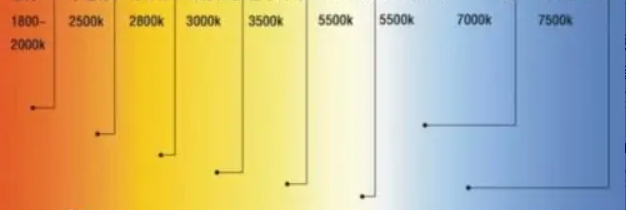
Difference Between 3000K and 3500K
The primary difference between 3000K and 3500K lies in their color temperature, which is measured in Kelvins (K). Color temperature is a way to describe the color appearance of light emitted by a light source. It plays a crucial role in defining the ambiance and mood of a space. In this blog, we will explore the factors to consider when deciding between 3000K and 3500K lighting, helping you make an informed choice that aligns with your preferences and needs.
1. Understanding Color Temperature:
Before we dive into the comparison, let's briefly understand what color temperature signifies. Color temperature is a characteristic of visible light and is measured in Kelvins (K). It is an indicator of the warmth or coolness of a light source. Lower Kelvin temperatures, such as 3000K, are warm and emit a cozy, yellowish light, while higher Kelvin temperatures, like 3500K, lean towards cooler, bluish tones.
3000K: The Warm Glow
Color Appearance: 3000K is considered a warm white light. It has a yellowish or amber tone, similar to the warm glow of traditional incandescent bulbs. It is also the common color temperature of halogen lamps and yellow fluorescent lamps.
Ambiance: This temperature is associated with a cozy and inviting atmosphere, making it an ideal choice for residential spaces like bedrooms, living rooms, and dining areas.
Best Usage: Perfect for areas where a relaxed and comfortable ambiance is desired. It enhances warm tones in interiors, providing a pleasant and intimate feel.
3500K: The Balanced Illumination
Color Appearance: 3500K falls into the neutral white category. However, it does not have the obvious brightening properties of the 4000K. To a certain extent, it has a balanced blend of warm and cool tones, offering a clean and crisp illumination.
Ambiance: This color temperature is versatile, providing a neutral and adaptable lighting solution. It is often chosen for areas where a combination of warmth and clarity is needed.
Best Usage: Versatile and adaptable, 3500K is often preferred in commercial spaces, offices, kitchens, and task-oriented environments where a well-lit, focused atmosphere is needed.
Especially, studio lamps, photographic floodlights (not flash), etc.
2. How to Choose:
The choice between 3000K and 3500K ultimately depends on the intended use and the ambiance you want to create. Here are a few considerations:
2.1 Purpose of Lighting:
For cozy and relaxed environments, 3000K is a classic choice. If you need a more versatile lighting solution suitable for various activities, 3500K may be the better option.
My personal feeling is that 3000K is more like sunrise and sunset, and 3500K is more like afternoon and morning.
2.2 Consider the Space:
Consider the function of the space. Bedrooms and living rooms, where comfort is key, may benefit from the warmth of 3000K. Offices and kitchens, requiring focused illumination, may find 3500K more appropriate.
The size of the room can impact the choice. Cooler temperatures like 3500K can help maintain brightness in larger spaces, while the warmth of 3000K may create a more intimate feel in smaller rooms.
2.3 Personal Preference:
Your personal taste and the aesthetic you want to achieve play a significant role. Experiment with both color temperatures to see which one aligns better with your vision and comfort.
Trust your instincts and personal comfort. Spend time in both 3000K and 3500K lit environments to see how each temperature makes you feel. The right lighting should enhance your well-being and the overall experience of the space.
Choosing between 3000K and 3500K lighting is a decision that goes beyond technical specifications. It involves understanding the nuances of color temperature and aligning them with the functionality and aesthetics of your space. By considering the purpose of the room, experimenting with samples, and staying true to your personal preferences, you can confidently select the perfect lighting to illuminate your surroundings. Remember, the right choice isn't just about brightness; it's about creating an atmosphere that enhances the comfort and functionality of your living or working space.
In summary, the difference between 3000K and 3500K is in the warmth of the light they emit. The choice between the two depends on the mood you want to create and the specific requirements of the space you are lighting.

Leave a comment